You searched for: jewish prisoners
<< Previous | Displaying results 301-325 of 455 for "jewish prisoners" | Next >>
-
The War Refugee Board
ArticleThe War Refugee Board was formed in 1944 by executive order under President Roosevelt. It was tasked with the rescue and relief of victims of Nazi oppression.

-
View of the Sobibor killing center
PhotoRare image of the site of the Sobibor killing center, taken from an album of photos belonging to Sobibor deputy camp commandant Johann Niemann.
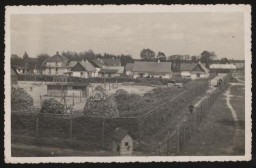
-
Martin Weiss
ArticleMartin Weiss and his family were deported to Auschwitz in 1944. Explore Marty’s biography and his description of arrival in Auschwitz.

-
Testimony on the Escape from the Mir Ghetto by Eliezer Breslin
ArticleRead a summary extract from Eliezer Breslin’s testimony on escaping from the Mir ghetto, given during the WWII war crimes investigation into Semion Serafinowicz.
-
Westerbork
ArticleThe Westerbork transit camp, located in the German-occupied Netherlands, served as a temporary collection point for Jews in the Netherlands before deportation.

-
Mass Shootings of Jews during the Holocaust
ArticleAlmost one third of the six million Holocaust victims were murdered in mass shootings.

-
Holocaust Denial: Key Dates
ArticleBrowse a timeline listing some key events in the evolution of Holocaust denial and the distortion of the facts of the Holocaust.
-
Fanny Judelowitz
ID CardFanny was the oldest of three girls born to a Jewish family in the Baltic seaport of Liepaja, a city with a large Jewish community in Latvia. Fanny attended a Jewish primary school there. Her parents owned and operated a shoe store and small shoe factory. 1933-39: As a young girl, Fanny's life revolved around activities with Betar, a Zionist youth movement founded in Riga in 1923. They had a group of about 25 boys and girls. They studied about Palestine and their Jewish heritage. In 1935 Fanny's mother…

-
Sandor Alexander Bokshorn
ID CardSandor grew up in Budapest where his father was a furrier. Sandor attended a Jewish school until he was 14 and then entered a business school run by the chamber of commerce. After he graduated in 1929, he entered his father's business. Sandor then spent a year studying at the Sorbonne in Paris before entering university in Budapest to study economics. 1933-39: As a Jew, Sandor was in the minority at the university because anti-Jewish laws enacted in the 1920s had set quotas that limited Jewish applicants.…
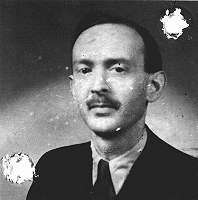
-
Abdol Hossein Sardari (1895–1981)
ArticleIranian diplomat Abdol Hossein Sardari gave critical assistance to Iranian Jews in occupied France (1940-1944) to protect them from Nazi persecution.
-
Kristallnacht
ArticleOn November 9–10, 1938, the Nazi regime coordinated a wave of antisemitic violence. This became known as Kristallnacht or the "Night of Broken Glass." Learn more

-
Hinda Chilewicz
ID CardHinda was the eldest of three children in a comfortable middle class Jewish family. Her father owned a textile business in Sosnowiec and her mother attended to the home. Sosnowiec in southwestern Poland had a growing Jewish community of almost 30,000 people. There was a Jewish hospital as well as religious schools. 1933–39: Hinda was just 13 years old when German troops invaded Poland on September 1, 1939. Three days later, they occupied Sosnowiec and terrorized the Jewish community, killing over a…

-
Regina Gutman
ID CardRegina was born in Radom, a city that had 120,000 inhabitants. Her father worked as a leather cutter for a large shoe manufacturer and her mother took care of their six children. The Gutmans were very religious and Regina attended Hebrew school in the afternoons. Radom had a vibrant Jewish community of some 30,000 people, several Yiddish daily newspapers, and beautiful synagogues. 1933–39: On September 1, 1939, the German army invaded Poland, and seven days later, Radom was occupied. Soon afterward, the…
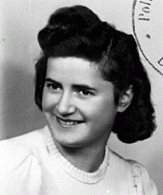
-
Catharina Soep
ID CardCatharina, called "Ina" by her family and friends, grew up in a religious Jewish household in Amsterdam. Ina's father, a successful diamond manufacturer, was president of the Amsterdam Jewish community. Ina had one brother, Benno, and a sister, Josette. 1933-39: On Sunday mornings and on Wednesdays after her classes at an Amsterdam Montessori school, Ina went to a private Jewish school where she studied Jewish history and Hebrew. Ina and her friends loved to meet in the evenings after they finished their…
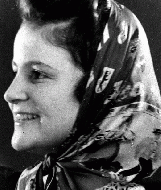
-
Mina Beker
ID CardMina, born Mina Friedman, was the youngest of four daughters born to a Jewish family in the Lithuanian town of Jonava. At the age of 18, Mina married Osser Beker, a lumber dealer. The couple settled in Jonava where Mina worked as a seamstress. The Bekers had two sons and two daughters, but their oldest son died in a childhood accident. 1933-39: Mina's son Abe attended a Jewish religious school in Jonava. But since Mina had received an extensive Jewish education, she decided to teach her daughters at home.…

-
Warsaw Uprising
ArticleThe 1944 Warsaw uprising was the single largest military effort undertaken by resistance forces to oppose German occupation during World War II.

-
Dietrich Bonhoeffer
ArticleGerman pastor and theologian Dietrich Bonhoeffer was an early critic of the Nazi regime. He was arrested in 1943 and executed in the Flossenbürg camp in 1945.
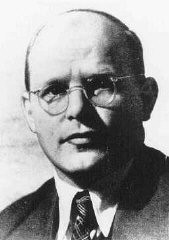
-
Manya Moszkowicz
ID CardManya was born in Chmielnik, a small Polish town that had a Jewish community dating back to the 16th century. Her father owned a furniture shop and her mother took care of the home. Manya had two younger brothers, David and Mordechai, and was surrounded by many close relatives. She attended both public and Hebrew schools and had many friends. 1933–39: In 1938 Manya's family moved to Sosnowiec, a larger city located near the German border. There she had her first experience with antisemitism. Signs…
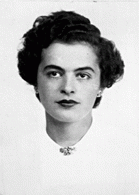
-
Selma (Wijnberg) Engel describes forced labor sorting the clothing and possessions of people deported to Sobibor
Oral HistorySelma was the youngest of four children born to Jewish parents. When she was 7, Selma and her family moved to the town of Zwolle where her parents ran a small hotel. When the Germans invaded the Netherlands in 1940, they confiscated the hotel. The family had to live in a poor Jewish section of the town. Selma went into hiding but was betrayed and then sent to the Westerbork camp. In April 1943 she was deported to Sobibor, where she worked in the clothes sorting area. There, the prisoners tried to pocket…

-
Oradour-sur-Glane
ArticleIn 1944, Waffen-SS troops massacred residents of Oradour-sur-Glane, a small village in France. Learn about the German occupation and destruction of the village.
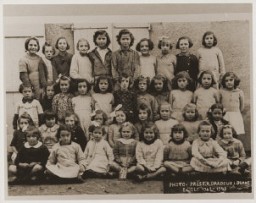
-
Israel Cendorf
ID CardIsrael was born into a religious Hasidic family who hoped he would become a rabbi. But Israel rebelled and apprenticed himself to a printer when he was 16. He read constantly, deepening his sympathy with the workers' struggle, and he soon began to write his own revolutionary songs. His first book of poems, The Red Agenda, was warmly received. 1933-39: In 1933, the year Hitler became chancellor of Germany, Israel moved to Paris. But the city was wracked by unemployment, and Jewish immigrants were in…
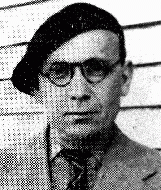
-
Golda (Olga) Bancic
ID CardOlga was born to a large Jewish family living in the Bessarabia province when it was still part of the Russian Empire. In 1918 the province was annexed by Romania. When Olga was 12 years old, she was arrested for the first time for having participated in a strike at the mattress factory where she worked. Despite her youth, she was put in prison and beaten. 1933-39: Olga was an active and vocal member of the local workers' organization. She had been arrested and imprisoned so often that she simply…
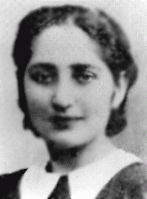
-
Samuel Gruber describes public hangings and beatings in the Lublin-Lipowa camp
Oral HistoryA Polish soldier, Samuel was wounded in action and taken by Germany as a prisoner of war. As the war continued, he and other Jewish prisoners received increasingly harsh treatment. Among the camps in which he was interned was Lublin-Lipowa, where he was among those forced to build the Majdanek concentration camp. In 1942, he escaped from the Germans, spending the rest of the war as the leader of an armed partisan group.

-
The Holocaust and World War II: Key Dates
ArticleRead a detailed timeline of the Holocaust and World War II. Learn about key dates and events from 1933-45 as Nazi antisemitic policies became more radical.

-
The Search for Perpetrators
ArticleThousands of Nazi criminals were never arrested. Learn more about the postwar efforts to bring Nazi perpetrators to justice.

